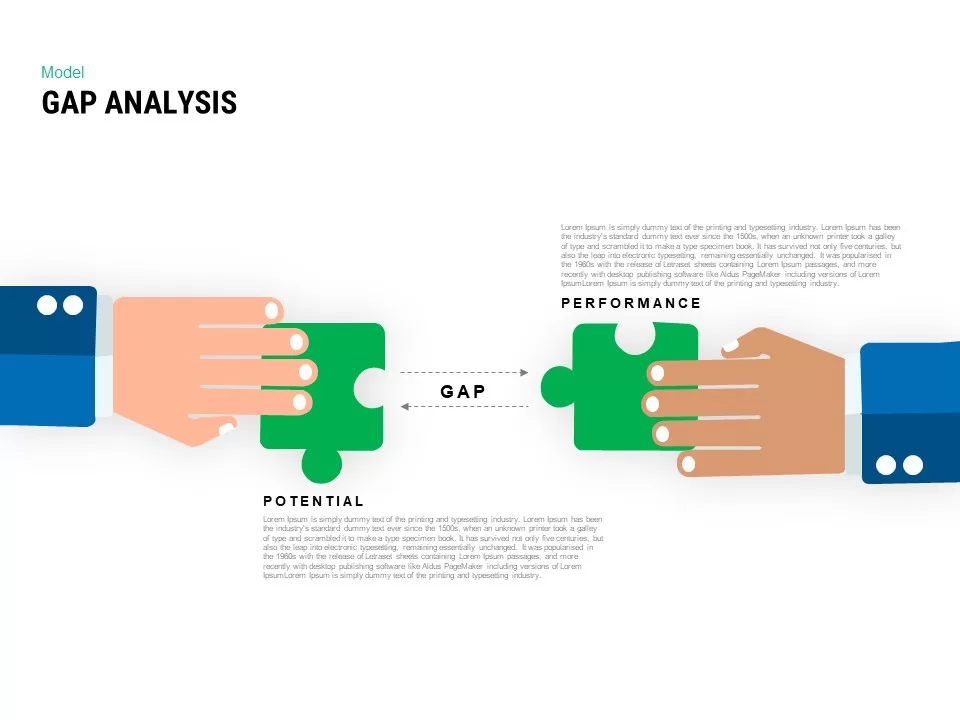gap analyis

Description
This fully editable gap analysis slide uses two interlocking puzzle pieces—one labeled “Potential” held by a left hand, the other labeled “Performance” held by a right hand—to visually illustrate the divide between current capabilities and target outcomes. A bold dotted arrow labeled “GAP” stretches between the pieces, reinforcing the concept of measured disparity. The clean white canvas and modern flat-vector style ensure maximum focus on your narrative, while dashed outlines around text areas offer a minimalist touch that keeps the slide uncluttered.
Built on master slides for both PowerPoint and Google Slides, this template leverages high-resolution vector shapes, intuitive placeholders, and smart text boxes that auto-resize to fit your content. Swap the puzzle-piece colors, adjust hand graphics, or relabel sections in seconds to match your brand guidelines. Entrance animations can be applied to each element, guiding audiences through your analysis in a step-by-step sequence. The scalable vector art guarantees crisp rendering on large displays, printed handouts, or PDF reports without any loss of clarity.
Whether you’re conducting strategic gap assessments, performance audits, or capability-maturity reviews, this diagram provides a clear framework that aligns stakeholders on areas for improvement. Its balanced composition also integrates seamlessly with timelines, SWOT charts, or KPI dashboards—helping you build a cohesive, professional deck that drives data-informed decisions.
Who is it for
Business analysts, strategy consultants, and project managers will leverage this slide to present gap analyses, capability assessments, and performance-improvement plans. Change-management teams, executive leadership, and operations managers can also use it to align on strategic objectives and action roadmaps.
Other Uses
Beyond gap analysis, repurpose this puzzle diagram to illustrate resource allocations, risk-mitigation strategies, or capability-maturity models. Customize labels to map SWOT factors, audit findings, or skill-development pathways—making it a versatile asset for any comparative or diagnostic presentation.
Login to download this file

















































